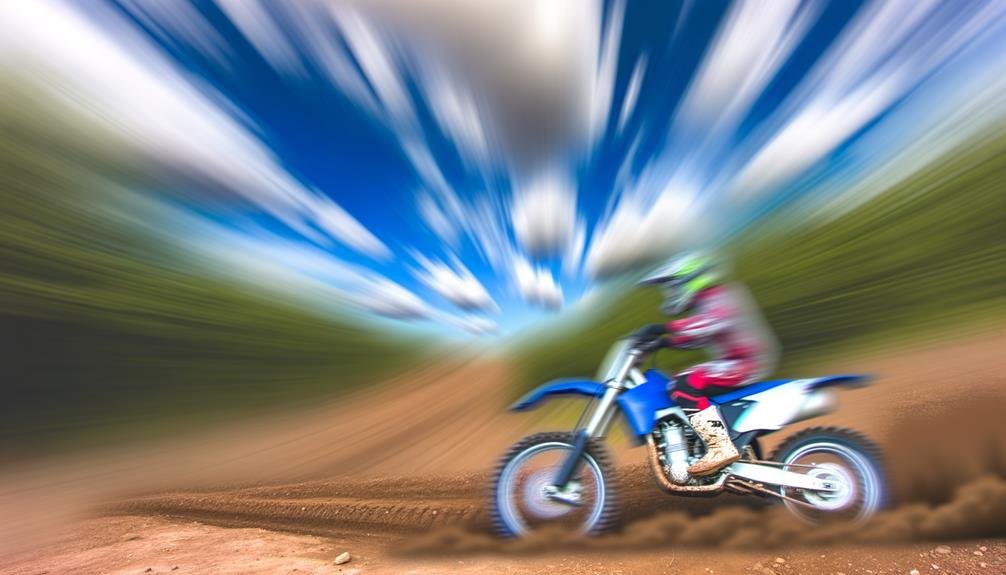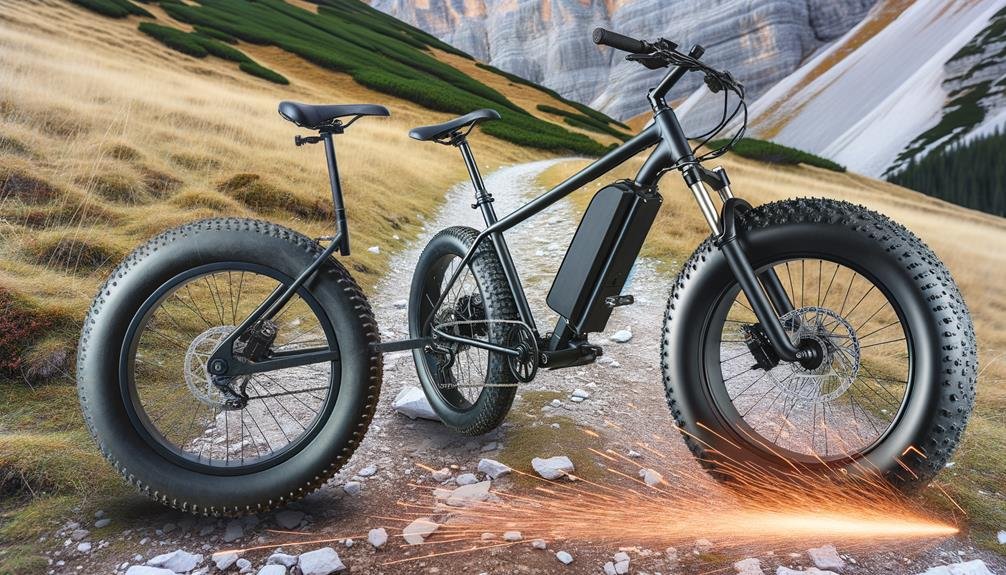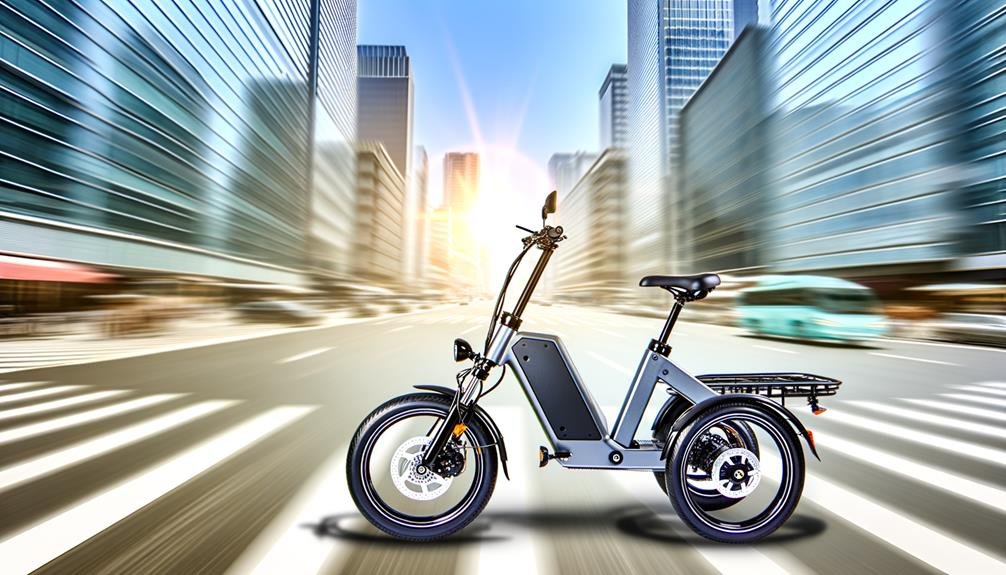Charles Miller is a veteran bike enthusiast with over 12 years of experience dealing with bikes as a mechanic. Despite immense love and expertise for...
Imagine yourself gliding effortlessly up a steep mountain trail, the whisper of wind in your ears drowned out by the low hum of an electric motor.
As an outdoor enthusiast and writer, I've often wondered about the top speed of electric mountain bikes and the factors that influence it.
The world of e-bikes is complex with different classes, motor power, battery capacities, and even legal limitations that can all impact speed.
So, strap on your helmet and let's take a closer look at just how fast these modern marvels of technology can truly go. Trust me, the answer might surprise you.
- Key Takeaways
- Understanding Electric Bike Classes
- Factors Influencing E-Bike Speed
- The Role of Motor Power
- Battery Capacity Explained
- Impact of Terrain and Road Conditions
- Rider's Weight and Skill Influence
- Legal Limitations on E-Bike Speeds
- Speed Ratings and Performance
- Maximizing Your E-Bike's Speed
- Changing Tires for Increased Speed
- Frequently Asked Questions
- Conclusion
Key Takeaways
- Class 3 electric mountain bikes can reach speeds up to 28 mph, as regulated by state laws.
- Motor power significantly impacts the acceleration of electric mountain bikes, allowing for faster acceleration on challenging terrain.
- Battery capacity determines the distance and performance of electric mountain bikes, with greater capacity allowing for longer rides.
- Terrain and road conditions, such as steep hills, can affect the speed and performance of electric mountain bikes, but skillful riding and the right gear can help navigate these challenges.
Understanding Electric Bike Classes
When it comes to electric bikes, they're divided into three main classes – Class 1, Class 2, and Class 3, each with its own unique speed and assistance regulations. This makes understanding electric bike classes key to finding the right fit for your cycling journey.
In the world of the Class 1 bike, the electric motor of less than 750 watts gives you a much-needed boost when pedaling, but only up to 20 mph. It's like having a supportive friend who's there when the going gets tough, but knows when to back off.
Class 2 bikes are a bit more hands-on. Their throttle can engage the motor up to 20 mph, regardless of whether you're pedaling or not. It's like having a tireless cheerleader that keeps pushing you forward, even when your own energy might be flagging.
Then there's the Class 3. This is the bike for the hardcore cyclist. It only provides assistance when you're actively pedaling and cuts off at a whopping 28 mph. It's the ultimate partner for those of us who love to challenge ourselves and push our limits.
Factors Influencing E-Bike Speed
Now that we've understood the different classes of electric bikes and their speed capabilities, let's explore the various factors that can influence the speed of your e-bike. Understanding these factors is crucial in maximizing how fast your electric mountain bikes go.
The factors influencing e-bike speed include:
- Motor Power: The power of the motor affects how quickly your e-bike accelerates. However, it doesn't influence the top speed.
- Battery Capacity: A large battery capacity can extend the range of your e-bike, but it doesn't increase its speed.
- Terrain and Road Conditions: Steep hills and rough roads can slow your e-bike down, as they demand more power from the motor.
- Rider Weight: Heavier riders may find their e-bike speed slightly decreased, as the motor needs to work harder.
The Role of Motor Power

Diving into the role of motor power, it's crucial to understand that it significantly impacts the acceleration of your electric mountain bike, not its top speed. This means that a bike with a higher motor power will accelerate faster, especially when tackling steep or challenging terrain. In this regard, motor power plays an integral role in determining the overall performance and capabilities of your bike.
Motor power is measured in watts, with higher wattage motors contributing to a faster and more powerful riding experience. So, when you're looking at how fast do electric mountain bikes go, don't forget to consider the motor power. Electric mountain bikes with more powerful motors can handle more challenging off-road conditions, providing a thrilling and exhilarating ride.
Battery Capacity Explained
Let's get into the heart of battery capacity.
It's crucial to grasp how battery power and life duration impact the speed and range of electric mountain bikes.
We'll also touch on the relation between battery charge and speed, an often overlooked but vital aspect.
Understanding Battery Power
To fully appreciate the power of your electric mountain bike, it's crucial to grasp the concept of battery capacity. Understanding battery power isn't just about knowing how long your bike can run, it's about unlocking the full potential of what your bike's motor provides.
- Battery capacity, measured in watt-hours (Wh), tells us how much energy the battery can store.
- A greater capacity means longer rides and more adventure before needing a recharge.
- It directly influences the performance and distance you can achieve on your trails.
- Charging times differ based on capacity, usually taking a few hours to top up.
Being part of the e-bike community means maintaining and charging your battery properly to ensure its longevity and peak performance. It's not just about the ride, it's about belonging to something bigger.
Battery Life Duration
When it comes to battery life duration, it's all about how long your electric mountain bike can last on a single charge, which is largely determined by its battery capacity.
We, as electric motor bike enthusiasts, know the value of long-lasting battery life. It's the fuel that keeps us going, the power that allows us to cover long distances, explore new terrains, and conquer challenging trails.
Of course, the battery life duration isn't the same for all bikes. It varies between models and brands, and depends on factors like your weight, the terrain, and the riding mode you choose.
But with proper charging and maintenance, we can prolong the life of our bike batteries and keep our adventures going.
Charge and Speed Relation
Moving on from battery life, it's equally crucial to understand how battery capacity and charging times impact the speed of our electric mountain bikes.
The motor's top speed is significantly influenced by battery capacity. Generally, electric bikes go as fast as the maximum assisted speed set by the manufacturer, often a speed limit of 20 mph or 28 mph.
- Higher battery capacity means the electric motor can deliver more power, allowing bikes to go faster and reach top speeds.
- A fully charged battery provides the maximum assisted speed, optimizing your bike speed.
- Pedal assistance is more effective with a well-charged battery, enabling you to go as fast as the top speed.
Understanding the charge-speed relation will help you maximize your bike's speed limit and enjoy the speed of an electric mountain bike.
Impact of Terrain and Road Conditions
In navigating through various terrains and road conditions, it's clear that these factors significantly impact the speed and performance of electric mountain bikes. Just as any adventurer knows, the landscape you're traversing will inevitably affect how fast you can go. Steep hills and rough terrains, for example, may increase reliance on the motor, consuming more battery power and potentially impacting your bike's speed.
But don't let these challenges deter you! With some savvy riding and the right gear, you can navigate these obstacles like a pro. Picking the best electric mountain bike for your needs can make all the difference. And remember, your weight and skill level also play a part in how these conditions affect your speed and overall performance.
Choosing the right riding mode can also help you overcome challenging terrains or road conditions. For instance, selecting a lower power mode could conserve battery, and in turn, affect your speed. So, if you're wondering, 'how fast do electric mountain bikes go?', consider the impact of terrain and road conditions. It's not just about the bike, but also about how you ride it. That's the beauty of our shared biking journey.
Rider's Weight and Skill Influence
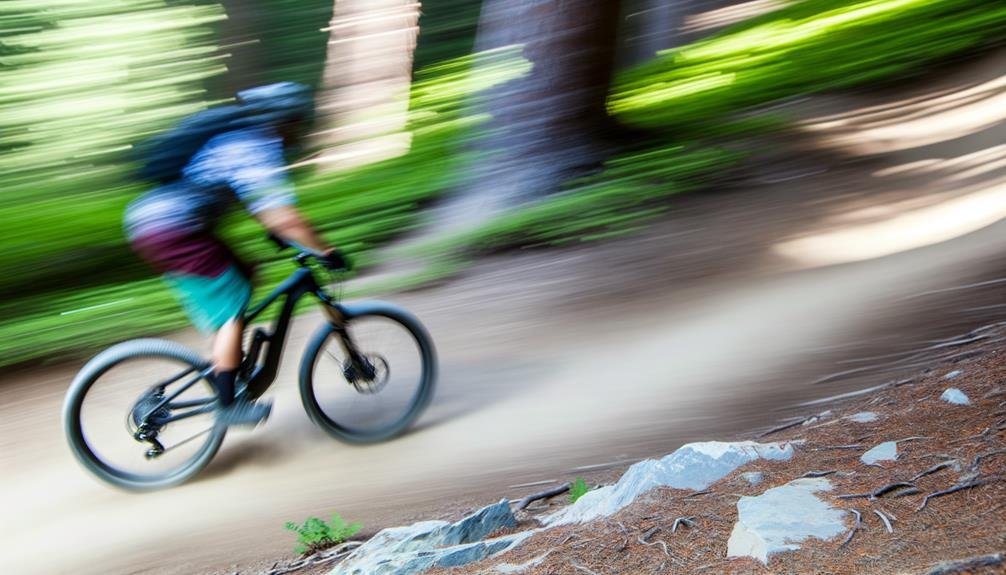
Beyond the terrain and your bike's features, it's also essential to consider how your weight and skill level can impact the speed and efficiency of your electric mountain bike. Your rider's weight and skill influence, in fact, play a significant role in dictating how fast do electric mountain bikes go.
Heavier riders might notice a bit of a slowdown. The extra weight means the motor has to work harder, which could lead to reduced acceleration and top speeds. It's a bit like carrying a heavy backpack uphill.
The class of bike also comes into play. Some e-bikes are better suited to heavier riders and can compensate for the extra weight, maintaining their speed efficiency.
Your skill level can also affect your speed. Skilled riders can optimize the bike's gears to get the best performance and even conserve battery life. It's like knowing the perfect gear to be in when you're tackling a steep climb.
Furthermore, skilled riders can make the battery last longer by using the power more efficiently, which can increase your riding range.
Legal Limitations on E-Bike Speeds
While we've been talking about factors like terrain and rider skill, it's important to remember that legal limitations also put a cap on just how fast electric mountain bikes can go. In the US, federal law sets the maximum speed for e-bikes at less than 20 mph when powered solely by the motor. However, Class 3 electric bikes can reach speeds up to 28 mph, but only if you're pedaling along with the motor.
This brings us to the state laws, which regulate the top speed of each class of electric bikes. For instance, some states restrict off-road trail riding to Class 1 e-bikes. As riders, we're all part of a community, and it's crucial that we respect these laws for the safety and enjoyment of everyone.
| E-Bike Class | Max Speed (mph) |
|---|---|
| Class 1 | 20 |
| Class 2 | 20 |
| Class 3 | 28 |
Speed Ratings and Performance
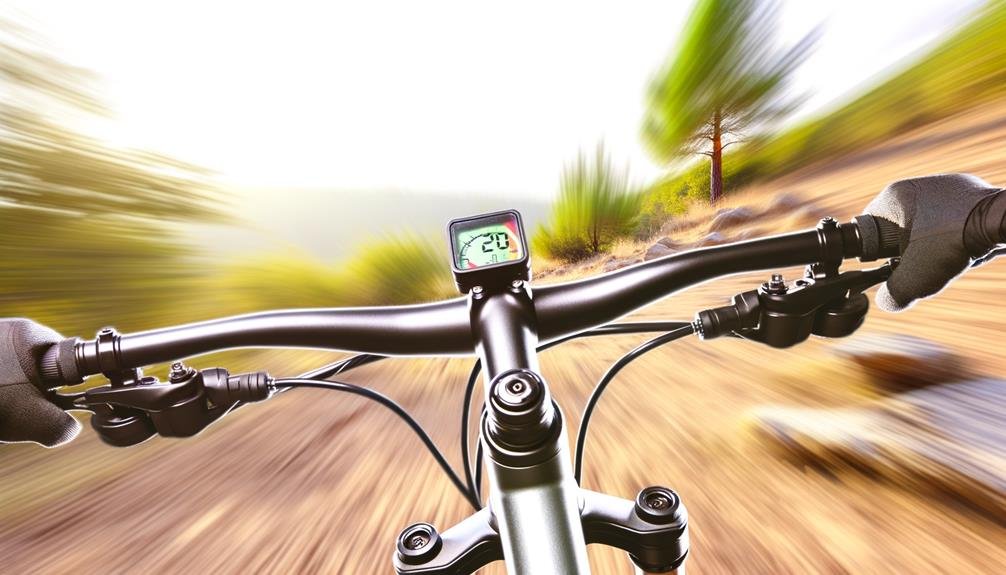
Now that we've covered the legal speed limits for e-bikes, let's take a closer look at how these speed ratings actually affect performance. Specifically, how fast do electric mountain bikes go?
- Class 1 bikes are fast, but their speed depends on how quickly you can pedal. They offer assist up to 20mph, a pace that can make uphill climbs feel like a breeze.
- Class 2 bikes also cap at 20mph, but here's the kicker: you don't have to pedal. With a throttle to engage the motor, you can cruise along without breaking a sweat.
- Class 3 bikes are where things get really exciting. They'll assist you up to a speedy 28mph, as long as you keep pedaling.
The speed your e-bike can reach will ultimately depend on factors like terrain, rider weight, and battery life.
Understanding these speed ratings is crucial, not only for compliance with the law but also for managing your expectations. Remember, it's not just about how fast you can go, but about the journey and community you're part of. We're all here to enjoy the ride, after all!
Maximizing Your E-Bike's Speed
Let's talk about how to squeeze out every bit of speed from your e-bike.
First, I'll explain the mechanics behind e-bikes and how they affect speed.
Then, we'll look at factors that can potentially influence your e-bike's speed and how to enhance its performance.
Understanding E-bike Mechanics
To maximize your e-bike's speed, it's essential to first grasp the mechanics behind these power-packed rides, from understanding the different classes and their speed limits to knowing the impact of pedaling on speed. This knowledge not only empowers you to select the perfect e-bike but also ensures you're a responsible rider.
Here's what you need to know:
- Different classes of e-bikes go at varying speeds.
- Pedaling can significantly boost your e-bike's speed.
- The rules and regulations for e-bikes vary depending on your locale.
- Proper charging and maintenance can maximize your e-bike's performance.
Potential Speed Factors
Having grasped the basics of e-bike mechanics, we can now explore the various factors that can potentially maximize your e-bike's speed.
First, the type of motor – whether it's a mid-drive or a hub – plays a significant role in your bike's speed.
Then, consider your riding mode, as adjusting it can influence both speed and battery consumption.
Pedaling, instead of relying solely on the motor, can also enhance speed and prolong your motor's lifespan.
Don't forget, your bike's potential speed might be limited by local, state, or federal regulations.
Finally, remember the impact of terrain and road conditions.
All these factors together can take your electric mountain bike up to a thrilling 52 mph.
Enhancing E-bike Performance
and is suitable for uphill climbs, while a mid-drive motor offers better weight distribution and is ideal for off-road riding. Additionally, the weight of the bike and the terrain you're riding on can also affect the speed of an electric mountain bike. It's important to note that different countries may have varying speed limits and regulations for electric bikes, so it's crucial to familiarize yourself with the local laws before riding. Overall, understanding the classification and considering these factors can help you make the most out of your electric mountain bike and maximize its speed potential.
Changing Tires for Increased Speed
Let's dive into how swapping out your electric mountain bike's tires can crank up its speed significantly. Changing tires for increased speed isn't just a pipe dream; it's a reality we can all partake in.
If you've ever wondered 'how fast do electric mountain bikes go?', then you're in the right place. One of the key factors boosting your bike's speed is the type of tires you have. Tires with lower rolling resistance, for instance, can give your bike that extra zip you're looking for.
Choosing tires with a smoother tread pattern can also enhance speed by reducing friction, allowing each mile to be a breeze. You might also want to consider the psi (pounds per square inch) of your tires. A higher psi can decrease your bike's rolling resistance, and in turn, push up your miles per hour.
Lighter tires can add to your bike's acceleration and overall speed. And if you really want to go all out, consider upgrading to tubeless tires. They can reduce the rotational weight, thus potentially giving your bike a speed boost.
Frequently Asked Questions
Can Electric Bikes Go 30 Mph?
Yes, some electric bikes can reach 30 mph, but they're not typical. The majority, especially those within legal limits, max out at 20-28 mph. However, unrestricted e-bikes can certainly exceed these speeds.
Are Electric Mountain Bikes Fast?
Yes, electric mountain bikes are fast! Depending on the model and conditions, they can hit speeds up to 28 mph. But remember, speed isn't everything. It's about enjoying the ride and feeling part of nature.
Can an Electric Bike Go 60 Mph?
While I've heard of electric bikes like the Delfast Top 3.0 hitting 50 mph, reaching 60 mph is quite a stretch. It's important to remember, we're in this for the adventure, not just speed!
How Fast Does a 5000w Electric Bike Go?
As an avid e-biker, I can tell you a 5000w electric bike goes pretty fast. It's known to reach speeds up to 50 mph. However, remember, factors like terrain and rider weight can influence this.
Conclusion
So, how fast can an e-mountain bike propel you?
Well, it all boils down to a mix of pedal power, battery life, terrain, and motor strength.
With all cylinders firing, you can potentially hit up to 28mph – but remember, it's not always about the speed.
Sometimes, it's about the journey.
So, strap on your helmet, rev up that motor, and let your e-bike whisk you away on an electrifying adventure that's bound by passion, not just speed limits.

Charles Miller is a veteran bike enthusiast with over 12 years of experience dealing with bikes as a mechanic. Despite immense love and expertise for his Tacoma, he rides his Trek Ebike more. Anytime you meet him, you’ll either hear him talking about Bikes, or writing about all things bikes and cars on this blog.
More Posts
